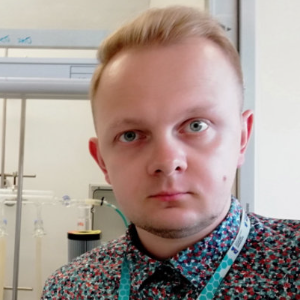Title : The effect of substituents bonded to silicon on the efficiency of the hydrosilylation of polybutadiene
Abstract:
Chemical modification of polymers has recently emerged as a topic of increasing importance in macromolecular chemistry and can often lead to novel materials with desirable functional groups which are otherwise inaccessible, difficult or too expensive to prepare by conventional polymerization techniques. Unsaturated polymers, especially diene-based polymers, are excellent polymers which can be exploited in addition reactions due to the technological importance associated with the parent materials and the reactivity of the carbon-carbon double bonds in the polymer chain. Polybutadiene (PB) is a versatile starting material due to its relatively low costs and high content of easily accessible double bonds, which enable the polymer to be modified using a wide range of chemical reactions. From the wide gamut of catalytic and non-catalytic transformations, hydrosilylation reaction seems to be very useful synthetic tool for obtaining functionalized polymers, thanks to its high selectivity and tolerance for a wide range of functional groups. Herein we present the results of our studies on the hydrosilylation of polybutadiene with alkyl, aryl and alkoxysilanes in the presence of platinum and rhodium complexes. In order to select the most efficient catalytic system, which, under optimal conditions, smoothly promotes the incorporation of the above-mentioned organosilicon modifiers into polybutadienes of various structure via hydrosilylation, real-time in situ FT-IR spectroscopy was used. The silylfunctionalized polymeric products were characterized by NMR analysis and gel permeation chromatography (GPC). It was demonstrated that the stereo-electronic properties of substituents directly bonded to the silicon atom containing the SiH moiety play a crucial role in the formation of the desired products, as well as affecting the time required for total conversion of organosilicon reagents. Partially modified polymers containing pendant alkoxy groups can be applied as additives for rubber compounds to enhance dispersion of inorganic particles in the polymer matrix, as well as promoting the formation of organic-inorganic hybrid materials.


